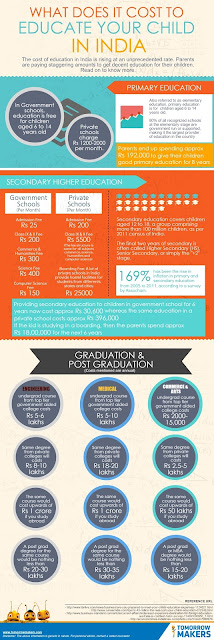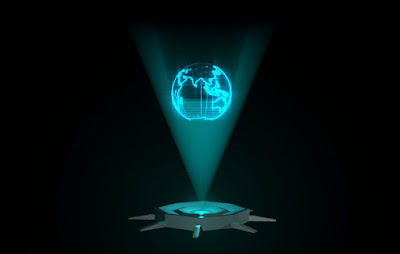Augmented Reality in the Classroom
How AR Will Change Learning and Student Engagement
With the constant introduction of new and exciting technologies, keeping up with terms and what they mean can get confusing. When we step into the space of virtual and augmented reality, many consider them to be the same thing, or do not know there is a difference.Simply put, if you use a technology to transport you to a different world or place that is not physical to your location, this is virtual reality. Augmented reality on the other hand builds on top of the physical space that exists around you.
 The Cost of Education
The Cost of Education
Teaching students is expensive. We often think about college expenses when the subjects of money and education are brought up in the same conversation. However, college is just the first instance that a student starts to worry about money and education, because it is now their personal responsibility. The amount of funding needed to create a successful student (before college) is often not met by their school district.Educators are often expected to pay out of pocket for necessities like maps and charts, lesson props, art supplies and even in some cases lab equipment. Lesson materials and physical models can be cumbersome and expensive. Augmented reality brings an entirely new learning experience that is not only portable, but affordable.
How does Augmented Reality Apply?
If a biology teacher was creating a lesson about basic human biology, they would more than likely use a video and maybe a few plastic props. With an augmented reality program built for educators, the teacher can use the old skeleton prop hanging in the science department closet and assign it multiple targets. Now, the students can use the same program to engage and interact with the lifeless prop. If a student is looking at the prop it is nothing more than a plastic skeleton. However, the moment a student engages the prop with their device, it comes to life. It is no longer a plastic prop, but an immersive lesson experience.One of the best parts of this technology is the same prop could be used to demonstrate an unlimited number of lessons. The cardiovascular system could come to life and the students could manipulate and view the heart, arteries, and blood vessels. Students could be fully engulfed in a visual representation of the chambers of the heart and see a demonstration of how blood is pumped and returned throughout the body. The next week, using the same prop as a target, the teacher could build an entirely new lesson plan. Now, when students engage the skeleton, they interact with the central nervous system and its components.
Just using this example, the amount of engagement and interest from the students would be astonishingly higher than the outdated videos and textbooks could have provided. The engagement of students is a key reason that augmented reality will become a learning tool in the classroom.
Students Engagement, What a Modern Classroom Lacks
Because of increased student engagement there is a higher level of subject matter retention. Having multi-modal inputs in a learning environment increases the interaction and interest from students. Aside from the more technical benefits of augmented reality in the classroom, like cost-effectiveness and ease-of-use cases, the most obvious is creating excitement for the student that leads to learning.Building Creativity, by Using Distractions
Students spend a majority of their non-school hours engulfed in electronic devices. While they are in class, there is often a struggle between lesson engagement and distraction because of these devices. Of all the in-depth layers that augmented reality can bring students and educators, the most basic is creativity. Having students strongly engaged and excited to learn new subject matter is something that is not seen in a majority of classrooms today. Using augmented reality engages students through platforms they use everyday, like iPads and tablets. Because these students are already masters of navigation on these devices, using them for learning only makes sense. In most cases, the extent of device use in the classroom extends to replacing bulky textbooks and watching subject-matter videos. The power of these devices are severely underutilized in the classroom. Using augmented reality, paired with the power of these devices, allows an entire new world of engagement for students.
Augmented Reality Helps All Student Groups
Although augmented reality has the ability to revolutionize the average classroom, one of the groups in education that too often get overlooked are students with special needs and learning disabilities. Using augmented reality, paired with other technologies and practices, educators can create an entirely new environment that has not yet been experienced in these classrooms. Special needs students will have the ability to manipulate objects and words throughout a lesson, which forwards them understanding and comprehension of the subject at their own pace.Using the power of technology that already exist within common devices, such as eye-tracking and micro-gyroscopes, educators can tailor lessons to individual students. For example, if a student continues to get stuck on a word during reading comprehension, eye-tracking software paired with a third party application allows a report to be generated and shows the educator where the student needs additional attention.
Augmentation of the Classroom is Coming
It is not a matter of if, but when, augmented reality will be used in the classroom. The world’s explosive innovation and creation of new technologies leads us to wonder, why the modern classroom has not already seen significant strides in Ed-Tech integration. It is time to build the classroom of tomorrow.source : EGG



Comments
Post a Comment